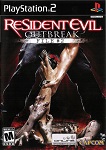Welcome back to my author interview series. Many thanks to Todd Keisling for taking some time to answer these questions. Without further ado, let’s get to the discussion.

1. What made you start writing horror?
Horror’s been a part of my life for as long as I can remember. My mom was always reading horror novels and watching the films, and some of my earliest memories involve Evil Dead II, Maximum Overdrive, and Phantasm. It’s in my blood. Always has been.
2. What is your favorite tool (vocabulary, commas, dialogue, flashbacks, etc.) in your writer’s toolbox?
Probably dialogue, only because it comes more easily than writing narration.
3. Which Survival Horror video game monster would you least like to encounter in real life?
Great question. Pyramid Head from Silent Hill comes to mind, but that seems too easy. Mr. X from Resident Evil 2 is pretty intense, as is the xenomorph from Alien: Isolation. But they’re tangible; you can run from them, even hide if you’re lucky. So, I’d have to go with something intangible, like the ghosts from Silent Hill 4: The Room or the Fatal Frame series.
4. What should readers know about your most recent work (or works) and where can they find your writing?
My most recent work is also my new collection of short fiction, titled COLD, BLACK & INFINITE: STORIES OF THE HORRIFIC & STRANGE. It’s 16 stories that mark a 5-year period of my writing career. Three of those stories appear in print for the first time. And I managed to convince the inimitable John Langan, author of The Fisherman, to write an introduction. There’s a wide range of stories in the book, and it stands as a good place to start for readers who are new to my work.
COLD, BLACK & INFINITE releases on 9/26 from Cemetery Dance. For pre-order information, go here: https://www.cemeterydance.com/coldblackinfiniteKeisling.
And for more info about my work, visit my website: www.toddkeisling.com.





 original Resident Evil. Fans of the series fondly recall the first time they read that haunting tome. I was amused to learn that in Japanese, the phrase is “kayui uma,” but due to the words being homonyms in that language, the phrase can mean “itchy, tasty,” or an odd assortment of amusing other things such as “delicious porridge,” “itchy porridge,” or “itchy horse,” to name a few. I was also amused to learn that the voice and live actors in the first Resident Evil were, essentially, a hodgepodge of English speakers with no voice acting experience pulled in off the streets of Japan.
original Resident Evil. Fans of the series fondly recall the first time they read that haunting tome. I was amused to learn that in Japanese, the phrase is “kayui uma,” but due to the words being homonyms in that language, the phrase can mean “itchy, tasty,” or an odd assortment of amusing other things such as “delicious porridge,” “itchy porridge,” or “itchy horse,” to name a few. I was also amused to learn that the voice and live actors in the first Resident Evil were, essentially, a hodgepodge of English speakers with no voice acting experience pulled in off the streets of Japan. Resident Evil games exclusively for Nintendo’s GameCube for a short time. As a kid, I didn’t have a GameCube, but my brothers had one at my dad’s. As a result, I spent most of my weekends and summers at my dad’s playing Resident Evil Remake, Resident Evil Zero, and Resident Evil 4 (which were all exclusive to GameCube for a time). I was also reminded of playing Resident Evil: Outbreak and Resident Evil Outbreak: File 2. These were the first online games I ever played, and I had to use my uncle’s PlayStation 2, which had an online adapter, to connect with other players during a short visit to his apartment in Philadelphia over the summer of 2005.
Resident Evil games exclusively for Nintendo’s GameCube for a short time. As a kid, I didn’t have a GameCube, but my brothers had one at my dad’s. As a result, I spent most of my weekends and summers at my dad’s playing Resident Evil Remake, Resident Evil Zero, and Resident Evil 4 (which were all exclusive to GameCube for a time). I was also reminded of playing Resident Evil: Outbreak and Resident Evil Outbreak: File 2. These were the first online games I ever played, and I had to use my uncle’s PlayStation 2, which had an online adapter, to connect with other players during a short visit to his apartment in Philadelphia over the summer of 2005.




